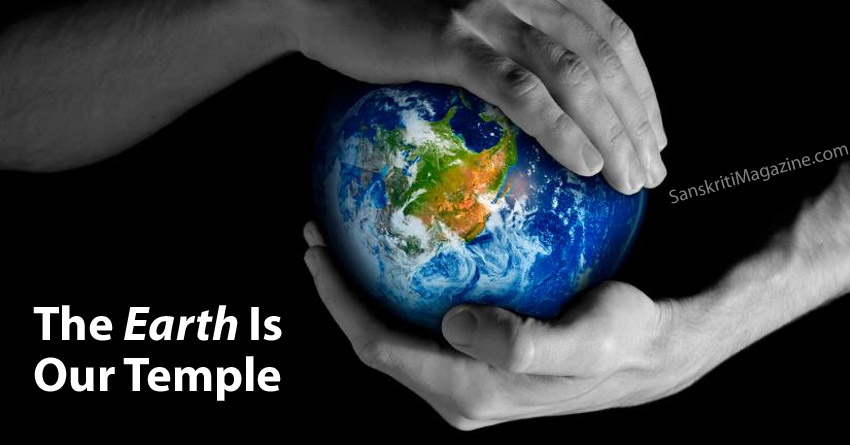When I was in high school, I tried to discover God and ethics through science—looking into physics, biochemistry and neurology. Where could our moral center be found? But then I fell off a cliff, and I stopped wondering so much.
This happened at an overlook in Peru. My friend shouted, “Get up, there’s ants all over the bench.” I stepped backwards. And then there was no more stepping. My right foot felt nothingness and I fell backwards down the cliff. It felt like those perfectly calm moments before sleep; I had no sense of falling. About ten feet down, a cradle of trees caught me. Mother Bhumi caught me. If I had fallen a few feet to the left or right, I would be dead. The words of Lord Krishna in the Bhagavad Gita echoed in me: “There is a banyan tree which has its roots upward and its branches down, and the Vedic hymns are its leaves. One who knows this tree is the knower of the Vedas.” I had been given the gift of a second chance—a chance to better know my religion and the Vedas. That moment provided me comfort and brought me closer to my Hindu faith.
I have always loved nature—I spent my childhood hiking and going to the beach. But not until I was nineteen, spending a summer in the rainforest, did I truly experience the natural world and thus begin to understand the heart of Hinduism. My japa became my early morning walks. The quiet—interrupted only by the cries of birds and monkeys—calmed my soul. As a result, I absorbed a deeper understanding of both ahimsa and karma. Before living in the rain-forest, I equated ahimsa—nonviolence—with being a vegetarian and opposing warfare of any kind.
Also Read: Why Do Hindus Revere Earth Like a Mother
However, this view was too simplistic. So many of our daily actions—using electricity, nonrenewable goods, and so forth—are hurting the Earth at a disturbing rate. For that brief summer in the rain-forest, living without any of these conveniences, I realized how simple life could be. I began to coexist with creatures that many find repulsive—snakes, spiders, mosquitoes and ticks. They became a daily part of life in our open forest hut. We once found a possum in our shower, and it was obvious that he wanted to be in the shower no more than we wanted him there. We released him back into the wild. On another occasion I found a tick, and upon releasing it, a tourist questioned me as to why I didn’t kill it. I explained the concept of ahimsa—that the tick was only behaving according to its nature, and that I could respond with compassion or with cruelty.
Although I now live with modern conveniences, I have not forgotten the deep and beautiful lessons of the forest, especially that of nonviolence. I was also taught the lessons of karma: that there is a natural balance to all things, and that in order to preserve it, we should take only what we need. Many people see themselves as separate from the Earth, but Hinduism rightfully points out that we are one with our planet. I’ve also learned that it is so easy to want more and more, but the reality is that only moksha can fill that void of desire. Lord Krishna advises us not to grow attached to things that will ultimately never satisfy us.
The Earth saved me eight years ago, and since that day She has saved me again and again. The bedrock of my Hindu faith lies in understanding the immense capacity the Earth has to give to us, and our responsibility to give back. This is why my mandir is not only where Lord Krishna’s murti is, but it is also the groves of redwood trees, the sand dunes and the surf. The Earth is our home and the heart of our Hindu faith.
~ Nila Bala, Assistant Public Defender in Baltimore. She attended college at Stanford University, taught as a preschool teacher and attended law school at Yale University.










